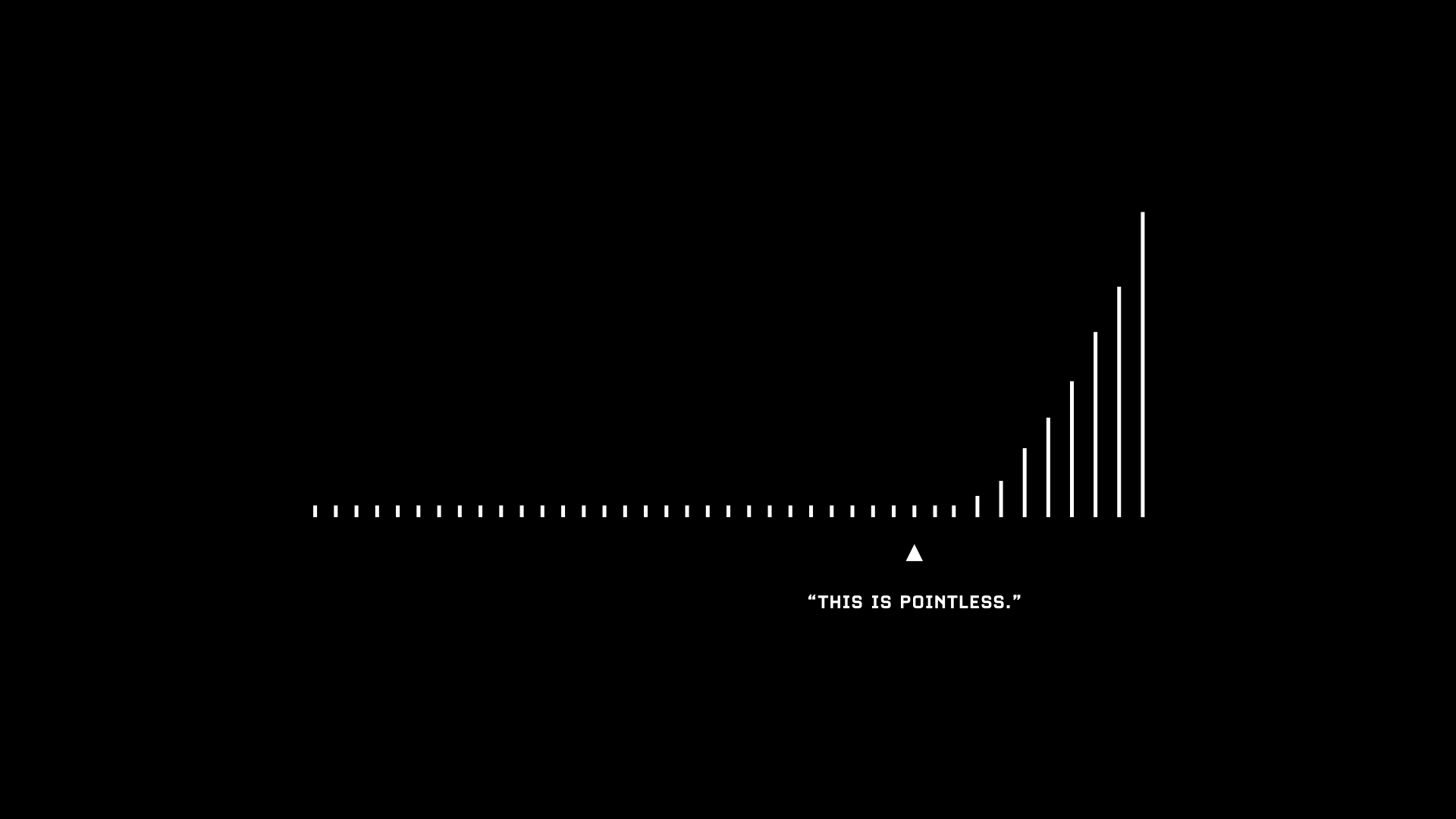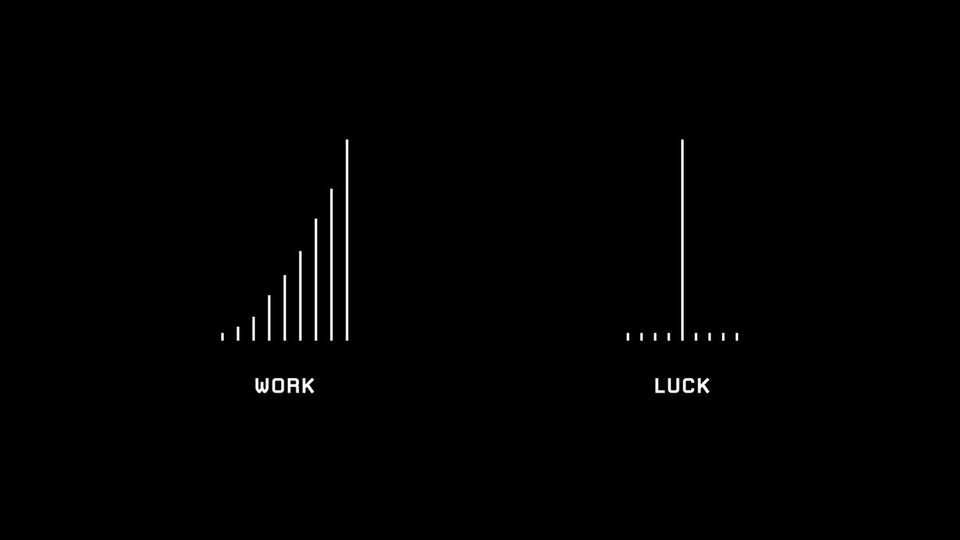Narrative Presence
Intro
To stand out on today’s internet, you need a compelling narrative presence.
Once upon a time, having ANY digital presence was novel. You were the first surf shop website, so the algorithm rewarded you with exclusive traffic.
The next wave, social media presence, played out similarly. Pioneers thought to promote a line of wetsuits through a social campaign. It was simple: sell where the surfers are.
It used to be that you were a brick-and-mortar shop first, and an online presence second. That’s changed. When everyone’s online, you need something deeper to differentiate.
It’s irrelevant how innovative a project is if we don’t know it exists. Because so many brands are online, even a truly innovative blue ocean company must present a compelling case for 'the why' of their mission. Brilliance undiscovered and un-utilized almost always lacks narrative presence.
The same is true in an oversaturated market. A consumer who faces a dizzying array of options will naturally gravitate to brands with the strongest narrative presence.
Online presence was once a thrilling hyperlink entry portal. It is now an expected doorway.
The way to grow an audience isn’t a flashier doorway. It’s not a door that tricks people inside, either. The way to call people to enter your surf shop is with a narrative presence.
Intrigued by the surf metaphors, but curious what’s next before you commit? Here’s the map forward…
I start with a ‘tactical definition’ for orientation of narrative presence in action, then share a ‘poetic definition’ to explore the inner alchemy happening below the surface.
Then I share what narrative presence looks like at three budget levels. I start with the ‘Blockbuster Version’ ($100M+) that’s most familiar. Next, I present an ‘Upper-Middle-Class Version’ ($10K-50K) the marketing teams behind top-charting books and podcasts can embrace. Finally, I share an ‘Everyone Version’ ($0+) individuals and brands can embrace at any stage of the journey.
A: Tactical Definition
Narrative presence has a bunch of marketing-focused cousins, like story brand, story-driven and story-first marketing. These terms are more input-oriented. They're helpful verbs to structure your approach as a Chief Marketing Officer.
Narrative presence centres on what the audience FEELS. It describes the sensation generated by your output once it's published into the world. There are many ways to invoke narrative presence. But the key is to think about the connective relationships between mediums.
To launch a new creative endeavour (whether book, podcast, course, product, or service) thought leaders should embrace cross-medium storytelling. Currently, most thought leaders launch their work as a singular item with some social media packaging.
Imagine the first meeting with a new client. You ask, what's your narrative presence?
A great answer:
“We're a consumer biotech company, and our story focus is longevity.
The CEO just hosted the first season of our podcast. She interviews innovators on the frontier of healthy lifespan extension.
Our designer has developed a really distinct illustration style to spotlight key quotes from the podcast on our newsletter and Instagram.
And we just hired a video specialist who's working with our CMO on a series that addresses the FAQs we've seen about longevity through search analytics. That's gonna go up on YouTube, as well be sharable as GIF in Twitter threads.”
A bad answer:
“This is our graphic designer Becky. We also recently hired a videographer. They’ve been making some great content! Becky, can you pull up that meme we posted yesterday? No that other one, it was uh… lol it’s hard to keep track of the firehose, eh? Move fast and break things! That’s the motto :)”
Many brands fool themselves into thinking slick design, clear copywriting, + SEO grabs are enough. They’re not. Trendy hacks inevitably wear out. When they do, marketers recognize the need to return to foundations and build up a story world.
B: Poetic Definition
Narrative presence is the force that makes storytelling magnetic.
An intriguing tweet, illustration, or article gives an immediate thrill. It’s the gleam of a new star. Narrative presence is the exhilaration of following that star to the creator’s website to discover it’s one of many in their vast constellation of creativity.
Narrative presence evokes the sensation of peering through the keyhole at a new world.
Once an author’s inner message of authenticity is clear, they can focus on its ideal presentation across each medium and platform. This creates a cohesive narrative presence where the sum is greater than the individual parts.
A great example of this is Jack Butcher’s design brand Visualize Value.
You might discover Visualize Value from a retweet in your Twitter feed, a podcast Jack Butcher has been interviewed on, or one of his courses. Each entry point is a river that flows full of narrative presence to the same body of work.
The surface constraints of black + white, elemental symbols (line, triangle, rectangle), and the ‘Carbon’ typeface catch eyes. But it’s the depth that makes those eyes return, follow, subscribe, and purchase increasing levels of engagement.
Many designers mimic the style of Visualize Value. But unless they add their own creative spin, it tends to fall flat. Jack Butcher already owns the personal monopoly on being himself. Artists that successfully build their own audience after taking the VV design fundamentals course are those who follow the lead of the principles, not the aesthetic.
The Blockbuster Version
Disney is the most grandiose example of the power of narrative presence. Worldwide consumers pay money to sit in the dark and watch Disney’s marketing campaigns.
That phrasing misses the point though. We’re watching stories.
When I was 9 years old, my Grandma Bev took my sister and me to see Pirates of the Caribbean. The story world of Captain Jack Sparrow was so enthralling that I was hooked. When I went to Disneyland several years later, I boarded the pirate ride with unparalleled lore and immersion.
Disney released their movie, Black Panther, alongside a companion hip-hop album by Kendrick Lamar. Every time “Opps” or “Pray For Me” from that album come on my cardio playlist I recall imagery from the film. The rap genre didn’t exist when Walt Disney drew his flywheel in 1957. But the principle that a catchy melody keeps its source film in eternal circulation remains true.
Immeasurable Value
Our analytics don’t have the sophistication to capture narrative presence. They don’t capture the person humming the catchy intro theme from your brand’s podcast. It’s cheaper in the short term to use a generic royalty-free track for that intro, so often we do. The opportunity cost of lost narrative presence is invisible.
It’s hard to pinpoint the direct payout of craftsmanship. But if Disney ‘saved money’ with the stock music approach, 9-year-old me wouldn’t have gone on to buy the Pirates of the Caribbean: Easy Piano songbook. Later on in high school, my friends and I wouldn’t have jokingly sang the main theme’s melody as a cue to signal adventure.
We’re creatures of story, and we pay homage to good catchphrases, songs, and character details. Without the character magnetism of Captain Jack Sparrow, we wouldn’t be compelled to say “why is the rum gone!” in homage on a Friday night. Invest in an iconic character and hundreds of people will do free franchise advertising for you each year with their Halloween costumes.
Disney knows this. They sell narrative presence.
The Upper-Middle-Class Version
In the past, narrative presence was only achievable for huge studios (like Disney). Today, the means of media production have become democratized.
The default investment of every marketing team should be an achievable, upper-middle-class version of narrative presence. By ‘upper-middle-class’ I refer to any brand or thought leader that can spend $10K-50K on a launch.
For instance, why is the bar set absurdly high for a book to express its ideas visually? Sapiens is one of the rare non-fiction bestsellers t0 receive a film/TV deal. But what if it hadn't? Why is the book-to-video standard set at Hollywood acquired IP or bust? Every NYT top 10 bestseller can afford to invest in a series of 1-3min videos exploring the core ideas for a visual audience.
This principle extends to all media, not just marquee literature. Take music videos for instance:
Music videos are made for bands at every stage of their career. Indie bands invest in music videos for their singles long before they can afford a Coldplay Up&Up extravaganza.
^ The second music video I directed. At a conservative minimum, probably 50 times lower budget than Coldplay’s
The grand launch is exciting, but so is the beauty of an ecosystem that grows and reinforces its biodiversity over time. Storytelling can start simple and affordable, then increase production value. The key is to start.
The Everyone Version
It can be easy to look at the story ecosystem Jack Butcher’s built with Visualize Value, think “I can’t do all that” and let defeat become a self-fulfilling prophecy.
This misses the point.
Yes, Jack Butcher’s ecosystem spans platforms, mediums and products. But it began with the simple consistency of posting visuals on Twitter.
With the right framing, scarcity becomes an asset. It generates hunger for more.
We only need to see a few rooms in Willy Wonka’s chocolate factory. The narrative presence evoked by the chocolate fountain and glass elevator stimulates our imagination’s endless factory of possibilities. It’s better to be small, targeted and value-dense than to sprawl thin and diffuse. Curiosity is the ultimate surround sound experience.
It has become substantially easier to create a narrative presence. An influx of magical software has arrived in the past couple of years in support of the creator economy. It's genuinely thrilling to use Descript to edit video like it’s text or use Riverside to record remotely in HD.
Every individual and company has the ability to harness this immense stored value. Those with enthusiasm to experiment can go hands-on with the software. Companies who want to save time + optimize for success can leverage their capital to hire creative specialists.
Used together, writing, audio and video express your unique perspective in a multi-dimensional way. This immersion attracts casual social media followers to cross the public to private bridge to your website, newsletter and services.
We're in the tidal recoil that precedes a sea-change of visual literacy and authenticity. Those who recognize this and seize the opportunity to paddle out towards deeper immersion lead the world forward. Those without a narrative presence will fade away.
Curious where to go next with your narrative presence?
Here’s my advice. If you’re _____ :
Disney or Jack Butcher, keep being a constellation.
A brand or thought leader interested to invest in the upper-middle-class version of this, here’s my contact page. Reach out and we can schedule a call to chat about your project.
Ready to implement this kind of thing yourself? Here’s a link to my Twitter where I’m exploring these ideas in public.
This post was refined through a village of feedback:
Grateful for the clarity of Brett Ripley, Anthony Polanco, Simone Silverstein, Arthur Plainview, Terri Lonier, Chris Wong, Aakash Gupta, Louie Bacaj, Michael Sklar, Aqil Pasha, Salman Ansari, Artur Piszek and Pat Simmons.



